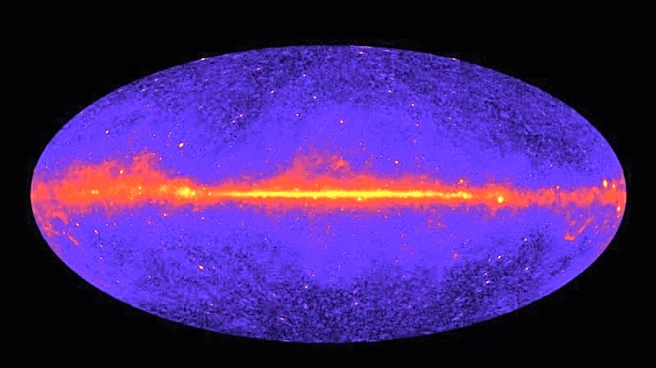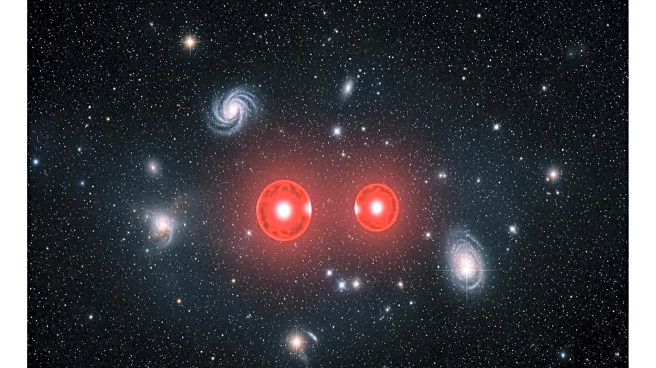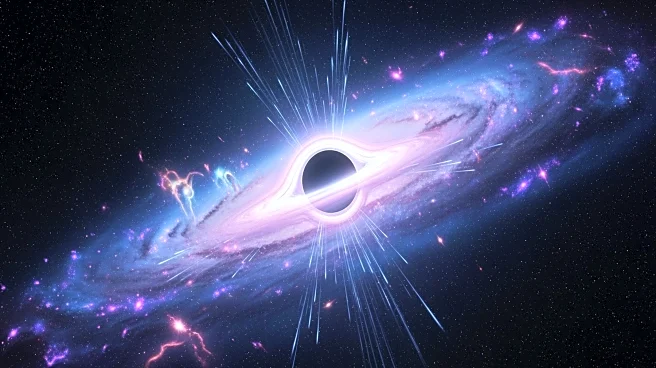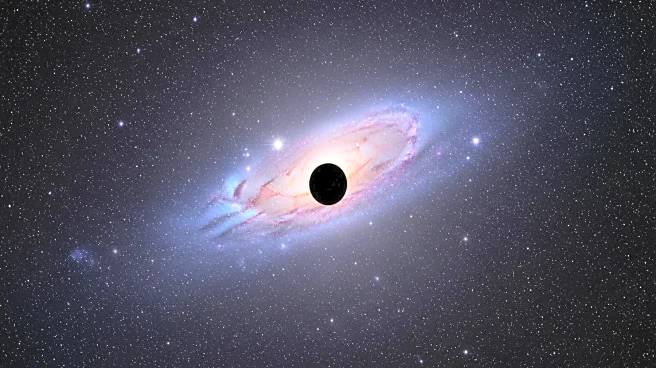What's Happening?
Astronomers have identified a remarkably small 'dark object' within a distant Einstein ring, potentially offering new insights into the nature of dark matter. The object, likely a clump of invisible dark matter,
was detected within B1938+666, an Einstein ring located approximately 10 billion light-years from Earth. This discovery was made possible through gravitational lensing, a phenomenon where light from a distant galaxy is bent around a closer foreground galaxy, creating a luminous halo. The object is estimated to be around 1 million times more massive than the sun, yet it is 100 times smaller than the previous record-holder for the least-massive object detected via gravitational lensing. Researchers utilized data from global radio observatories to achieve the equivalent observing power of an Earth-size telescope, allowing them to detect subtle fluctuations in the data.
Why It's Important?
This discovery is significant as it provides a potential method for studying dark matter, which constitutes 27% of the known universe but does not interact with light. Gravitational lensing is one of the few ways to detect and measure dark matter, making Einstein rings crucial in understanding its properties. The identification of isolated dark matter clumps supports the 'cold dark matter theory,' which suggests that dark matter clumps together at slow speeds, emitting low energy. The new methodology developed by researchers could facilitate the detection of more dark matter clumps, enhancing our understanding of the universe's composition and the behavior of dark matter.
What's Next?
Researchers anticipate that dark matter clumps are more prevalent than currently recognized, with every galaxy, including the Milky Way, potentially filled with them. The new numerical approaches developed for this study will aid in identifying more clumps around existing Einstein rings. The James Webb Space Telescope is expected to play a significant role in discovering additional Einstein rings, further advancing the study of dark matter. Continued research and data analysis will be crucial in confirming the existence of these clumps and understanding their implications for cosmology.
Beyond the Headlines
The discovery of this dark object could have broader implications for cosmology and the study of the universe's structure. Understanding dark matter is essential for explaining the gravitational forces that govern galaxy formation and evolution. The ability to detect and analyze dark matter clumps could lead to breakthroughs in theoretical physics and cosmology, potentially reshaping our understanding of the universe's fundamental components.












